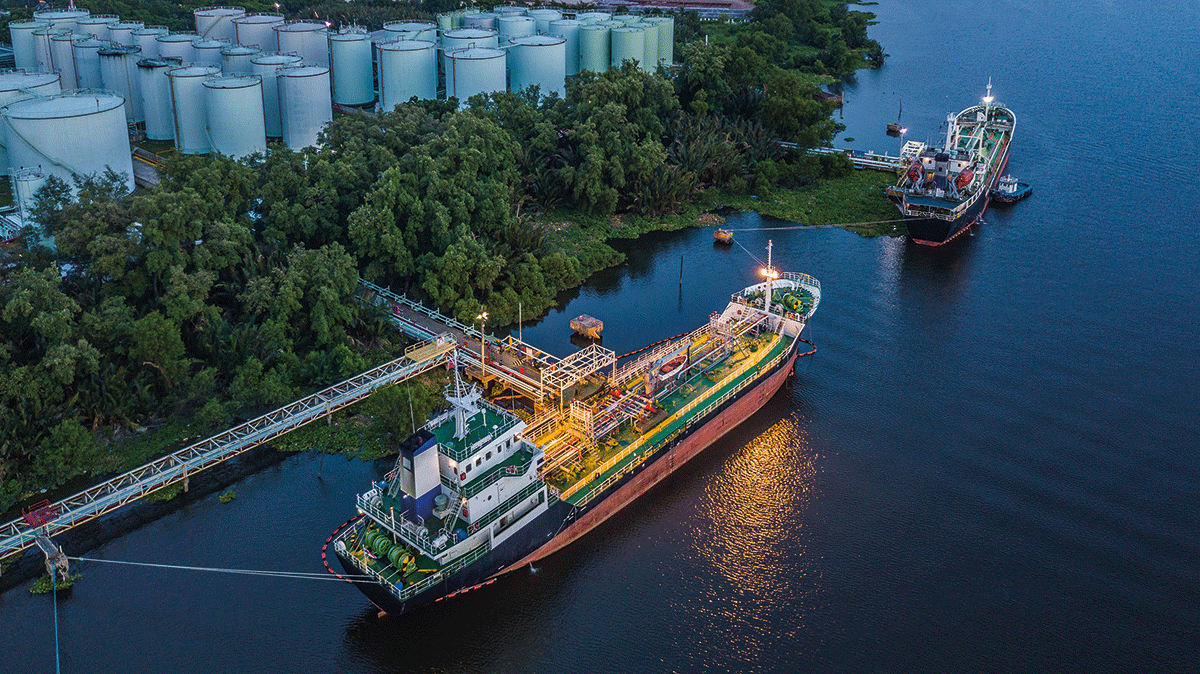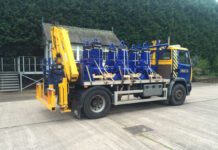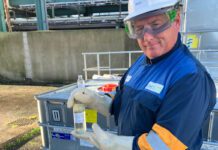
Valve manufacturer Bay Valves explores the issue of VOC emissions, and potential solutions, including a new valve that the firms says combines some of the safety properties of high velocity and valves with pressure control. This article is adapted from one recently appearing on the firm’s blog.
Around 70 million barrels of hydrocarbons are lost yearly due to evaporation of Volatile Organic Compounds (VOC) during loading, storage and transportation of crude oil on ships. This is an environmental problem as well as a significant economic cost.
The lost amount represents a value of 3.0 to 3.5 billion USD annually. In other words: if you are a shipping operator, curbing seaborne VOC emissions is a chance to make your business more profitable. For a standard ship such as an Aframax tanker, the economic loss during a single voyage with full tank amounts to more than 40,000 USD.
In past days, this loss of cargo was viewed as a necessary evil since prevention was considered too costly. Fortunately, recent technical breakthroughs have changed the scene.
From under-pressure to positive pressure
Over the last decade, scientific studies have demonstrated the efficiency of the Saturated Vapor Pressure (SvP) concept. Simply by maintaining a high pressure inside cargo tanks, the VOCs are contained within the liquid hydrocarbon phase and are unable to evaporate.
As a consequence of the new insight, loading systems for tankers were soon modified so under-pressure was replaced by a positive pressure. Over the following years, several tankers were equipped with such new technology. Depending on the exact volatility and composition of the crude oil, VOC generation fell by 70 to 90 %. As a positive side-effect, emissions of other volatile cargos such as chemical products, LPG (Liquified Petroleum Gas) and LNG (Liquified Natural Gas) were reduced similarly by the same technology, while emissions of H2S and other environmentally harmful compounds were also brought down.
Avoiding fluctuations in pressure is important
The story does not end with introducing positive tank pressure, however, as traditional venting systems allow considerable fluctuations in pressure. Traditional venting systems are autonomous weight loaded systems that initiate venting at a preset setting and continues far beyond what is necessary and thus closes at a much lower pressure, venting an unnecessarily large amount of VOC and inert gas into the atmosphere.
To tackle the challenge of fluctuations in tank pressure, Bay Valves has invented the SuperSat (Sat is for Saturation) system, which continuously maintains the high tank pressure and thus avoids VOC losses.
VOC emission control is obviously not the only concern for a crude oil transporter. Safety will always be a top priority. As High Velocity Valves have long been established as the industry standard in regard to safety due to the ability to respond extremely fast to occurring leaks, a VOC emission control system can only be successful when integrated fully with High Velocity Valves featuring a negative pressure drop.
This very fact is the motivation behind the invention of SuperSat – a valve that integrates the excellent safety properties of the High Velocity Valve with pressure control and thus efficient VOC emission control which is associated with the Saturated Vapor Pressure (SvP) concept.
Why VOC emissions should be reduced
VOCs are a large group of organic compounds. Several light hydrocarbons, such as methane, ethane and propane, are VOCs. Due to high vapor pressure, VOCs can easily evaporate. To the oil industry, evaporation of hydrocarbons equals economic loss.
VOC can also cause oil spill on a ship’s deck, as severe VOC generation can cause oil entrainment into the mixture of inert gas and VOC.
Further, VOC emissions can harm the environment and human health. Especially methane is a potent greenhouse gas, contributing to climate change. Several other VOCs including ethane, propane, butane, pentane, and hexane react with NOx to form ground level ozone which has harmful effects on human health and on plants.
An overlooked problem
For many years did VOC emissions receive little focus. As noted in an important study by Bhatia and Dinwoodie, University of Plymouth, UK, this could largely be attributed to the attention devoted to large scale oil-spills such as the Exxon Valdez accident (Alaska, 1989) and similar events. While major spills would attract wide media coverage and subsequently political interest in mitigation, the tiny, yet constant leakages caused by evaporation of VOCs would go by unnoticed.
In their article “Daily losses in shipping crude oil: measuring crude oil loss rates in daily North Sea shipping operations” (Energy Policy, 2004), Bhatia and Dinwoodie state: “Historically low crude oil prices generated little interest in losses under 0.5 %, but today oil majors host loss control departments investigating how the tonnage employed, type of crude, varying load and discharge ports and evaporation during cargo operations affect losses.”
The study by Bhatia and Dinwoodie went on to demonstrate how the continuous leakages of VOC would amount to significant total losses.
As a consequence of this and other studies, several countries and organizations began to look into the problem. For instance, the Norwegian Marine Technology Research Institute (MARINTEK) concluded that storage and loading of crude oil on ships was responsible for more than 50 % of Norway’s non-methane VOC emissions.
The studies went on to estimate that as much as 9 million tons of VOC was emitted annually from global crude oil loading and transport, with about 5 million tons emitted during the actual transport. The figure corresponds to about 70 million barrels of light end hydrocarbons representing a value between 3.0 and 3.5 billion USD annually.
Stay ahead of regulation
Following the increased focus on VOCs, the International Maritime Organization (IMO) and several countries, regions and cities with harbours have adapted or are considering schemes to curb VOC emissions.
This presents oil majors with a unique window of opportunity: by investing in VOC emission control, they can save millions of dollars while adapting to upcoming environmental standards for the industry.
The SuperSat system for VOC control is one product that can help. The price is comparable to traditional venting systems.






